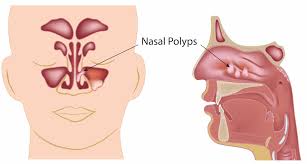Cataract and Its cure in Homeopathy
Cataracts are the blurring of the focal point of your eye, which is regularly clear. Most Cataract foster gradually after some time, causing side effects like foggy vision. Cataract can be carefully taken out through an outpatient technique that reestablishes vision in almost everybody.
Who gets Cataract?
A great many people begin getting Cataract around age 40. However, you likely will not see indications until after age 60. Seldom, children are brought into the world with Cataract because of a birth deformity.
You're bound to foster Cataract on the off chance that you:
• Smoke cigarettes.
• Live in a space with terrible air contamination.
• Use liquor intensely.
• Have a family background of Cataract.
Causes of Cataract:
The focal point of your eye is for the most part water and proteins. As proteins separate over the long haul, they stick around in your eye. These waiting proteins can make your focal point overcast, so it's difficult to see plainly. This is an average however disagreeable part of maturing.
A few things can accelerate the arrangement of Cataract, for example,
- Diabetes.
- Steroids, normal drugs to deal with conditions like joint inflammation and lupus.
- Eye a medical procedure or eye wounds.
- Radiation therapy to your chest area.
- Investing a ton of energy in the sun without eye insurance, similar to shades.
What are the side effects of a Cataract?
Cataracts are a typical piece of the eye's maturing interaction. At last, they can cause:
- Vision that is overcast, hazy, hazy or dingy.
- Affectability to brilliant daylight, lights or headlights.
- Glare (seeing a radiance around lights), particularly when you drive around evening time with approaching headlights.
- Solution changes in glasses, including abrupt myopia.
- Twofold vision.
- Need for more brilliant light to peruse.
- Trouble seeing around evening time (helpless night vision).
- Changes in the manner you see tone.

Analyzed of Cataract:
In the event that you have Cataract side effects, see an eye specialist (ophthalmologist) for a total test. The specialist should widen your student to see inside your eye. During this test, exceptional eye drops broaden your student (the dark piece of the eye). At the point when the understudy is totally open, your PCP checks the strength of your eye. Your primary care physician can check whether you have Cataract or different issues and discover the amount of your vision is hindered.
Treatment of Cataract:
In the event that your Cataract indications are gentle, you may very well need another remedy for glasses or contacts. Cataracts ordinarily deteriorate after some time, however. In the end, your PCP will probably prescribe a medical procedure to eliminate the Cataract.

What are the various sorts of Cataract medical procedure?
There are two sorts of strategies to eliminate Cataract:
Phacoemulsification Cataract medical procedure:
Phacoemulsification is the most well-known method for Cataract. Your ophthalmologist makes a little opening in the eye to arrive at the blurred focal point. Utilizing high-recurrence sound waves (ultrasound) or a laser, your ophthalmologist breaks the focal point into pieces. Then, at that point the specialist attractions focal point pieces from your eye and places in another plastic focal point.
Extra capsular Cataract medical procedure:
In extra capsular Cataract medical procedure, your ophthalmologist makes a bigger opening in the eye. Rather than separating the focal point and afterward eliminating it, your PCP eliminates the focal point in one piece. Then, at that point the specialist embeds the fabricated focal point.

Cataract Medicines:
Calcarea carbonica:
This cure might be demonstrated when an individual creating Cataract has the sensation of glancing through a fog. An individual requiring this cure will in general be a dependable kind, yet feels overpowered when under pressure and fears breakdown or infection. Crispness, enlarged organs, weight issues, and simple tiring from effort are different signs for Calcarea carbonica.

Calcarea fluorica:
This cure is frequently demonstrated when tissues solidify or thicken strangely. An individual requiring this cure may likewise have a propensity toward hard enlarged lymph hubs, joint agonies, sinewy developments, or bone-spikes. The individual for the most part feels more awful during climate changes and improved by warmth.

Causticum:
This cure has been useful sometimes when the individual creating Cataract additionally had issues moving the eyes, as though the muscles around the eyeballs were hardened or frail particularly subsequent to getting cold in the breeze or outside. The individual might have a sensation of sand in the eyes. An individual who needs this cure might will in general have strong solidness in many body regions. They are for the most part more regrettable from cold and improved by warmth, and frequently feel best in sodden or blustery climate.

Silicea (additionally called Silica):
This cure has been useful to certain people who created Cataract after expanded times of eye fatigue, or after sweat of the feet had been stifled. Individuals requiring this cure will in general be cold (despite the fact that they frequently sweat around evening time) and regularly have low protection from contamination. Fine hair, powerless nails, simple sluggishness, and enlarged lymph hubs are different signs recommending Silicea.

Regard: Dr. Naveed Shahzad











